Fine art of Raja Ravi Varma’s printing press
Editor’s note: The true genius of the iconic artist lay not as much in his art but the pioneering use of technology. The printing press turned Raja Ravi Varma into a household name—making him the first Indian artist with mass appeal, far beyond the drawing rooms of the elite.
This article originally appeared on the MAP Academy website. All images that appear with the MAP Academy articles are sourced from various collections around the world, and due image credits can be found on the original article on the MAP Academy website. The MAP Academy is a non-profit online educational platform committed to building equitable resources for the study of art histories from South Asia.
A printing press established by the eminent artist Raja Ravi Varma and his brother C Raja Raja Varma, the Raja Ravi Varma Press, also known as the Ravi Varma Fine Art Lithographic Press and the FAL Press — Bombay, was established in 1894 in Girgaum, Bombay (now Girgaon, Mumbai), Maharashtra. From 1901 onwards, the Press moved within the city and began operating from Malavali, Lonavala. It was amongst the earliest in India to use large-scale printing technologies, and the first to mass-produce works of an eminent and established artist. The Raja Ravi Varma Press is credited with introducing new modes of fine arts consumption outside elite structures of patronage and with making Ravi Varma a household name.
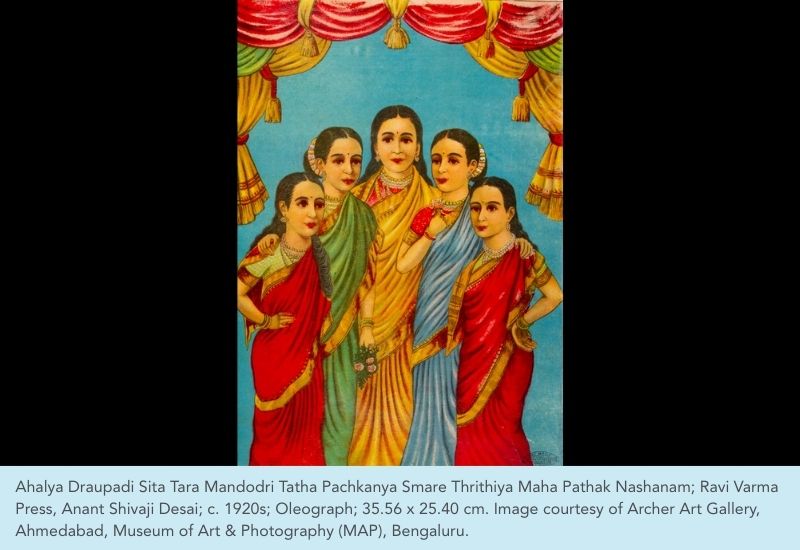
Before the advent of lithography in India, print reproductions of paintings were made primarily in Germany and imported to India through British agents. By the late 1880s, popular European prints, especially German prints of erotic subjects, flooded indigenous markets. Chromolithographs grew in popularity, replacing monochrome lithographs, and were adopted by Indian presses in the cities of Bombay and Pune, Maharashtra, and Calcutta (now Kolkata), West Bengal, which emerged as major printing hubs. This period also saw a growing interest in Hindu mythological and religious imagery, owing largely to a nascent nationalism that sought to find a unifying visual idiom in the country’s cultural past. It is into this landscape of competing visual identities and the commodification of art that the Raja Ravi Varma Press would make its entry.
It is believed that the impetus for the lithographic press was first provided by former Diwan of Travancore T Madhava Rao, who urged Varma in 1884 to send some of his works to Europe so that they could be made into oleographs for local distribution. In 1892, Varma imported machinery for steam-driven presses from Germany and employed the help of two German litho-transfer artists, Fritz Schleicher and B Gerhardt, to install and operate them. Under their expertise, the Press began to operate with a capacity of up to eight hundred impressions an hour and soon earned an unrivalled reputation for high-quality oleographs.
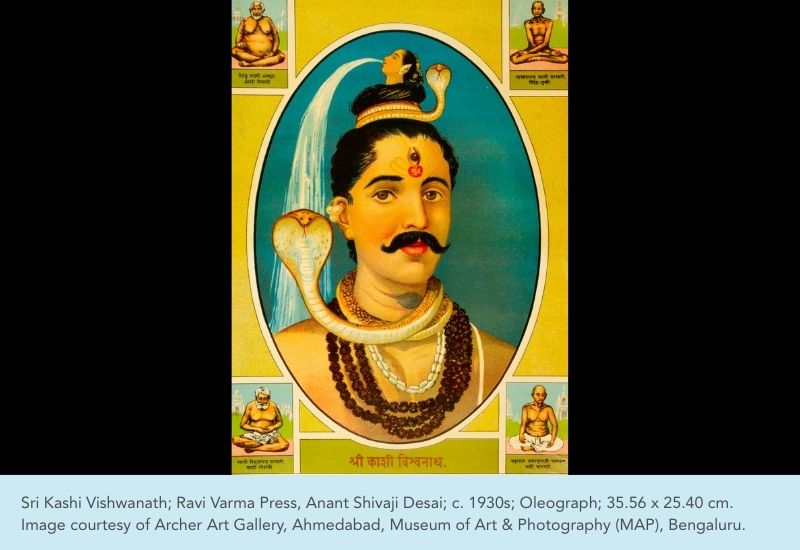
The first chromolithograph printed was of Shakuntala Janm (“The Birth of Shakuntala”, 1894), followed by the prints Lakshmi and Saraswati. The prints produced were mostly reproductions of existing works of Ravi Varma and Raja Varma, as well as purpose-made images of religious, historic and nationalist icons and themes from mythology and literary traditions, rendered in a hybrid naturalistic style.
The Varma brothers saw their lithographic work as introducing Neoclassical ideals to art designed for mass consumption, generally avoiding the explicit eroticism that characterised the most popular prints in the market at the time. The Press’ prints also appealed to emerging ideas of national and religious identity, and thus rapidly became among the most popular and recognisable images in India at the time. As demand grew, the Press recruited Bombay-based merchants Ananta Shivaji Desai and AK Joshi as distribution agents. Several trained artists would be involved with making images for the Press, including MV Dhurandhar, GV Venkatesh Rao and Dadasaheb Phalke, who later went on to become eminent practitioners in their own fields.
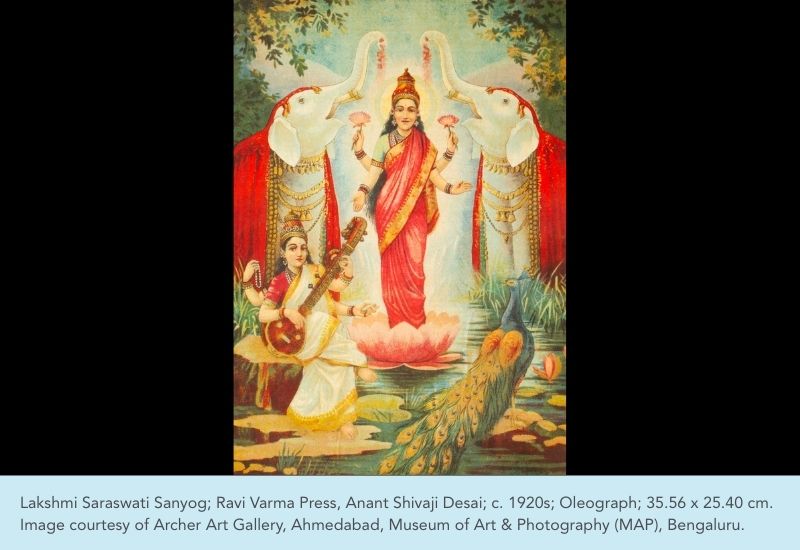 The Press, incorporated under Raja Varma’s name, was owned by Ravi Varma, with business partner Govardhandas Khatau Makhanji handling the financial aspects of the business. Following the outbreak of plague in the 1890s, Makhanji had the Press relocated to the suburb of Ghatkopar in 1898, but parted ways with Varma shortly after. With labour shortages leading to operational difficulties and rampant imitation and piracy by rival presses, the Press began to suffer losses. As the Varma brothers were also unable to spend time managing the Press due to their ongoing professional engagements and personal circumstances, they sold the majority interest of the press to Fritz Schleicher for INR 25,000 in 1901, along with copyright permission for over a hundred paintings. Schleicher shortened the name to F.A.L. Press—Bombay and in the following decades expanded its scope to Christmas cards, postcards, product advertisements and textile and matchbox labels. He gave sole distributorship of works from Varma’s Baroda and Mysore collections to the agent Anant Shivaji Desai.
The Press, incorporated under Raja Varma’s name, was owned by Ravi Varma, with business partner Govardhandas Khatau Makhanji handling the financial aspects of the business. Following the outbreak of plague in the 1890s, Makhanji had the Press relocated to the suburb of Ghatkopar in 1898, but parted ways with Varma shortly after. With labour shortages leading to operational difficulties and rampant imitation and piracy by rival presses, the Press began to suffer losses. As the Varma brothers were also unable to spend time managing the Press due to their ongoing professional engagements and personal circumstances, they sold the majority interest of the press to Fritz Schleicher for INR 25,000 in 1901, along with copyright permission for over a hundred paintings. Schleicher shortened the name to F.A.L. Press—Bombay and in the following decades expanded its scope to Christmas cards, postcards, product advertisements and textile and matchbox labels. He gave sole distributorship of works from Varma’s Baroda and Mysore collections to the agent Anant Shivaji Desai.
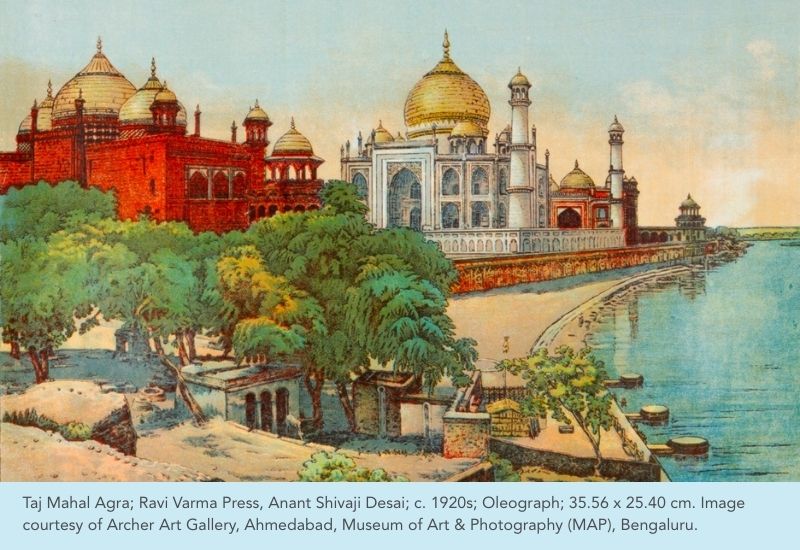
After the takeover, the quality of prints began to decline steeply. The diversification of the Press offerings, the proliferation of inauthentic prints bearing Varma’s signature and competition from other printing concerns led to a deterioration in both artistic standards and the quality of prints. This, however, did not reduce the appeal of the Press’s images. Attesting to this is the popularity of the chromolithograph Kali (1910–20), which was created years after Varma’s death and bore no resemblance to the style of Varma’s earlier oil paintings.
Remaining in operation well after Schleicher’s death in 1935, the Press was destroyed by a fire in 1972. Although briefly revived, it was shut down in 1975 and its remaining prints and master stones auctioned in 2000.

Despite the acclaim Ravi Varma achieved as an artist, he has received criticism for the “corruption” of the ideals and themes of high art, and for his incorporation of European aesthetic modes. However, the popularity of the Press’ prints even after the demise of Varma the artist attests to the fact that the style and imagery of Varma began to take on a life of its own in popular imagination and taste. The Press was instrumental in creating a pan-Indian iconography that dictated representational conventions during a time of cultural and social fragmentation. It can be seen as the initiator of the thriving popular art and printing culture that emerged in India through the 20th century.
The MAP of Knowledge
Sign up for the MAP Academy's free online course, Modern & Contemporary Indian Art, authored by Dr Beth Citron and developed in partnership with Terrain.art. Through engaging videos, illustrated texts and interactive quizzes, the course introduces a range of artists such as Amrita Sher-Gil, Zarina Hashmi and Sudhir Patwardhan, and explores a trajectory of key figures, artworks and pivotal moments in modern history. Spanning the late-19th century to the present day, it also examines artistic responses to several shifting socio-political forces of the time.
This article has been written by the research and editorial team at the MAP Academy. Through its free knowledge resources—Encyclopedia of Art, Online Courses, and Stories—the MAP Academy encourages knowledge building and engagement with the region's visual arts. Follow them on Instagram to learn more about art histories from South Asia.
MAP Academy & Nalli Fellowship is now open!!
Are you working on the histories and practices of South Asian textiles and their socioeconomic, environmental or cultural implications?
The MAP Academy & Nalli Fellowships is offering four Research Fellowships of Rs 5.5 lakh each, for the study of textiles from India, Pakistan, Bangladesh, Bhutan, Tibet, Afghanistan, Myanmar, the Maldives, Nepal, and Sri Lanka. Applications are welcome from individuals—students, journalists, educators, designers, researchers—as well as from collectives and non-profit organisations. The grant must be used to support one year of research, which may be part of a longer-term project.
Applications will be assessed by an Advisory Committee, based on the responses in the submitted form, which will also double as the project proposal. Shortlisted applicants will be interviewed via an online video call, after which a final selection will be made.
Applications will remain open until October 15, 2025.
Find out more, and apply through this link. For any queries, contact us at: fellowships@map-india.org.
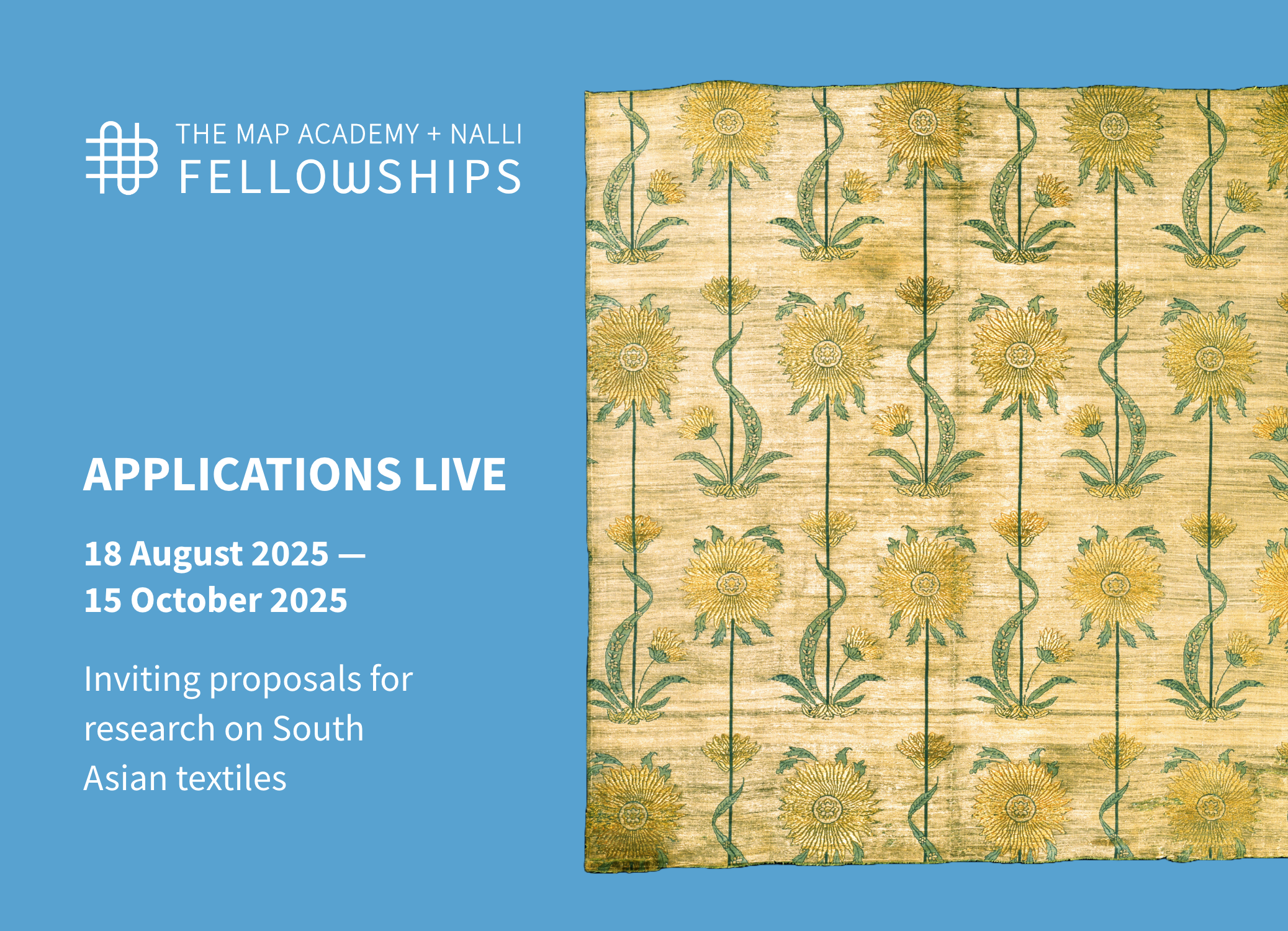


 souk picks
souk picks